A quick word of introduction. My name is Stuart McDonald and this is Couchfish—the perfect tub of ice-cream for the traveller stranded on the couch. The newsletter has both a paid edition which traces a fantasy itinerary through Southeast Asia, and a free one that covers, well, everything else. If you’d like to support me finding more tourism stuff to moan about, please consider becoming a paid subscriber. Thank you.
While the travel press prefer the (frankly offensive) tag of “resort island,” Pulau Dewata—the “Island of the Gods”—is how Indonesians know their small island of Bali.
The westernmost of the Lesser Sunda Islands, Bali sits midway along the archipelago. Shaped like a westward-facing chicken laying an egg (sorry Nusa Penida), the island has been on the traveller radar for over a century. Like the waves that wash upon its many beaches, its popularity has ebbed and flowed over the years, but the last couple of decades have been most certainly flow years.
Once you see it, you can’t unsee it. Thanks Sally Arnold for pointing it out.
Despite the deluge of both domestic and inbound tourists—and the damage they’ve wrought—the residents Pulau Dewata refers to have not moved on. When you know where to look—and what for—you’ll see that in Bali, the gods are everywhere.
As you walk away from the ferry landing at Gilimanuk you’ll no doubt see small offerings laid on the pavement. Canang Sari, these offerings are placed daily by devotees of the island’s dominant faith, Balinese Hinduism. At a glance, they seem photogenic but trifling—if a bit mysterious. Take a closer look though, and you’ll see that they’re a microcosm of an entire cosmology, one crafted with care to honour a glad-bag of deities.
Offerings come in many shapes and sizes. Note those in the foreground are offerings to me—not the gods. Photo: Stuart McDonald.
For years I wondered what they meant. I knew they were “some kind of religious thing”, but that was about it, and it wasn’t until I asked a Balinese to pull one apart and explain it to me that I got a quick lesson in the divine. Please bear in mind, canang sari come in many varieties with many different purposes, so I’m tackling the simplest of examples here.
The base is the easiest bit. The square palm leaf base symbolises the earth and the moon, and if coconut leaves are there, they’re for the stars. You need to think of this as both a representation of a realm but also a vehicle to present the essence of the offerings to the gods. The business end of the offering stick is contained within.
For Vishnu the Preserver, and the northern compass point, there’s red betel nut. White lime is for west and Shiva the Destroyer. Brahma the Creator gets the south and scores a cutting of gambier for their efforts. Atop these lies white flower petals, for the east and Iswara. The aforementioned trio also score flowers—red for Brahma, yellow for Shiva and green or blue for Vishnu. Atop these still, there might be candy, cookies or another small snack—which, alongside the time required to prepare the offering, are indicators of the selflessness of the devotee.
Pizza, ciggies—any brand will do—nobody said the gods are on a health kick. As you can see, day to day practice doesn’t always reflect the theory. Photo: Stuart McDonald.
Once prepared, the offering is placed on the pavement, within a family temple, or elsewhere. Holy water is sprinkled onto the offering, then as a soft prayer is mouthed, incense is lit, and a hand is waved gently through the smoke. With the wave, the smoke carrying the meaning of the offering makes its way upwards to the gods. Even this final motion is elemental—earth, fire, water and wind coming together to deliver one’s prayers to another realm.
This process takes place every morning—in temples, households, and places of business. From the beach, up the rivers, through the forests, to the mountaintops, you’ll see canang sari. Once you know where to look—and what you’re looking at—the gods are everywhere.
Ritual on Bali permeates far deeper though. As I wrote yesterday, there’s something one needs to do before leaving Gilimanuk to delve further into the island. You’ll need to walk for almost a kilometre, but on the upside this will help to work up an appetite.
Say your prayers. Photo: Sally Arnold.
Ayam Betutu Men Tempeh sits on the north side of the road, behind a large parking area—don’t worry you can’t miss it. In business since the late 1970s, over the years entrepreneurial staff have left to start their own knock-off shops—often with confusingly similar names—but the original is easier enough to find.
The dish in question is Ayam Betutu, a rich and spicy chicken dish (though the duck version is perhaps better known), that is right up there with babi guling and lawar when you’re grasping to furnish a must-try Bali dishes listicle.
Ayam betutu is more than a meal though. Much like canang sari, this is a dish made with the gods in mind—indeed the story goes that the original recipe was handed down from the gods. Sadly as the Ibu behind Ayam Betutu Men Tempeh has passed away, this snippet can’t be verified.
A meal fit for the gods. Photo: Stuart McDonald.
Regardless of its origins, the bumbu (spice mixture) that goes into ayam betutu honours the gods. As this piece by chef Will Meyrick details, the four primary incredients are there to pay homage. There’s turmeric for Shiva, galangal for Brahma, ginger for Vishnu and kencur (a galangal varierty) for Iswara. Meyrick writes:
“In traditional Balinese kitchens, these four ingredients are measured with the length of fingers; galangal by the middle finger, turmeric the index finger, Ginger the ring finger, and kencur the pinky. Eight more spices are combined with these main ones, including shallots, garlic, shrimp paste, chilli and salt.”
While it isn’t clear from Meyrick’s write-up how much bumbu the above produces, going on the flavours at Ayam Betutu Men Tempeh, she must have had big hands. Hand size aside, the chicken is boiled in the concoction for an hour before being ladled onto plates ready to be slung. The staff—who I’ve found to be reliably terse verging on rude over the years—will grudgingly provide more spice if desired, but for many, especially those new to Bali, extra heat won’t be necessary.
Don’t forget to give Java a final wave goodbye. Photo: Adam Poskitt.
So there you go. You’re in Bali. You’ve walked by countless offerings to the gods, then you’ve eaten a meal sourced from them, and made with them in mind. And you’re not even a kilometre in yet. And you know what? You’ve not seen a single resort. It’s called Pulau Dewata for a reason.
Couchfish is 100 per cent independent and reader-supported. If you’re not already a subscriber, and you’d like to show your support, become a paying subscriber today for just US$7 per month—you can find out more about Couchfish here—or simply share this story with a friend.
Don’t forget, you can find the free podcasts on Apple, Pocket Casts and Spotify as well as right here on Couchfish.




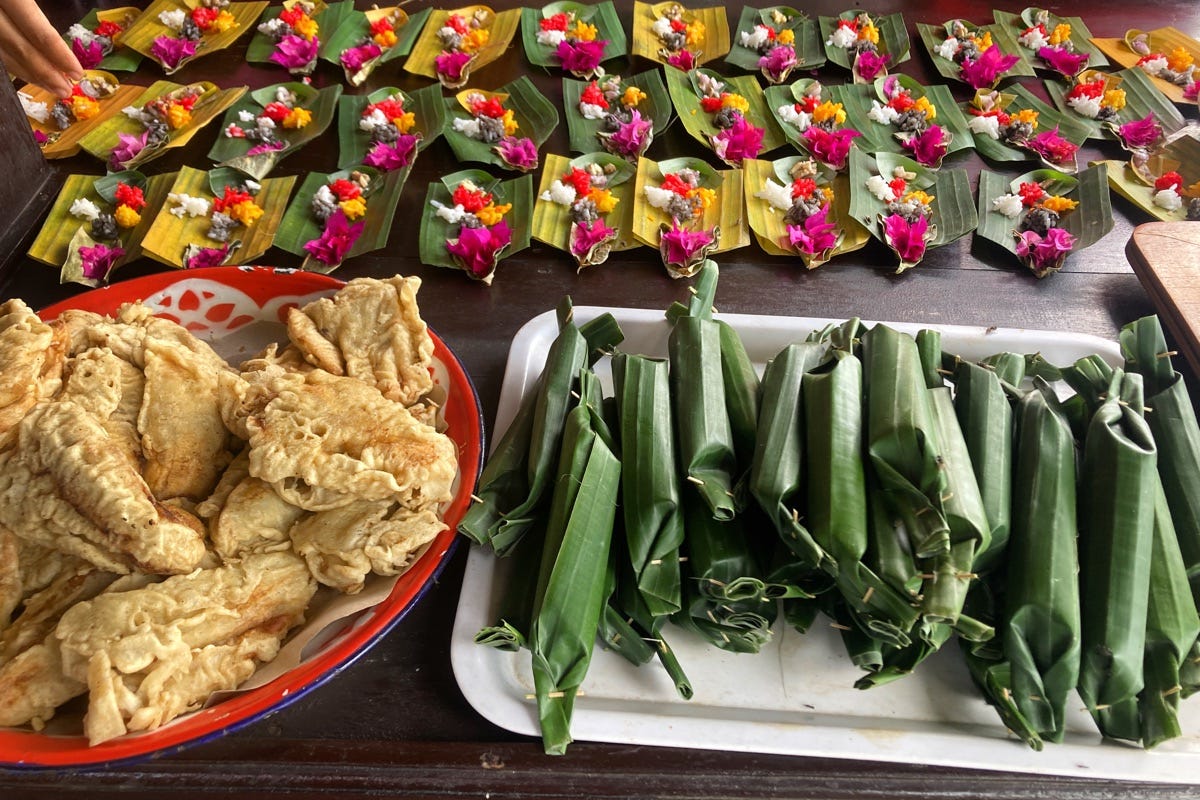
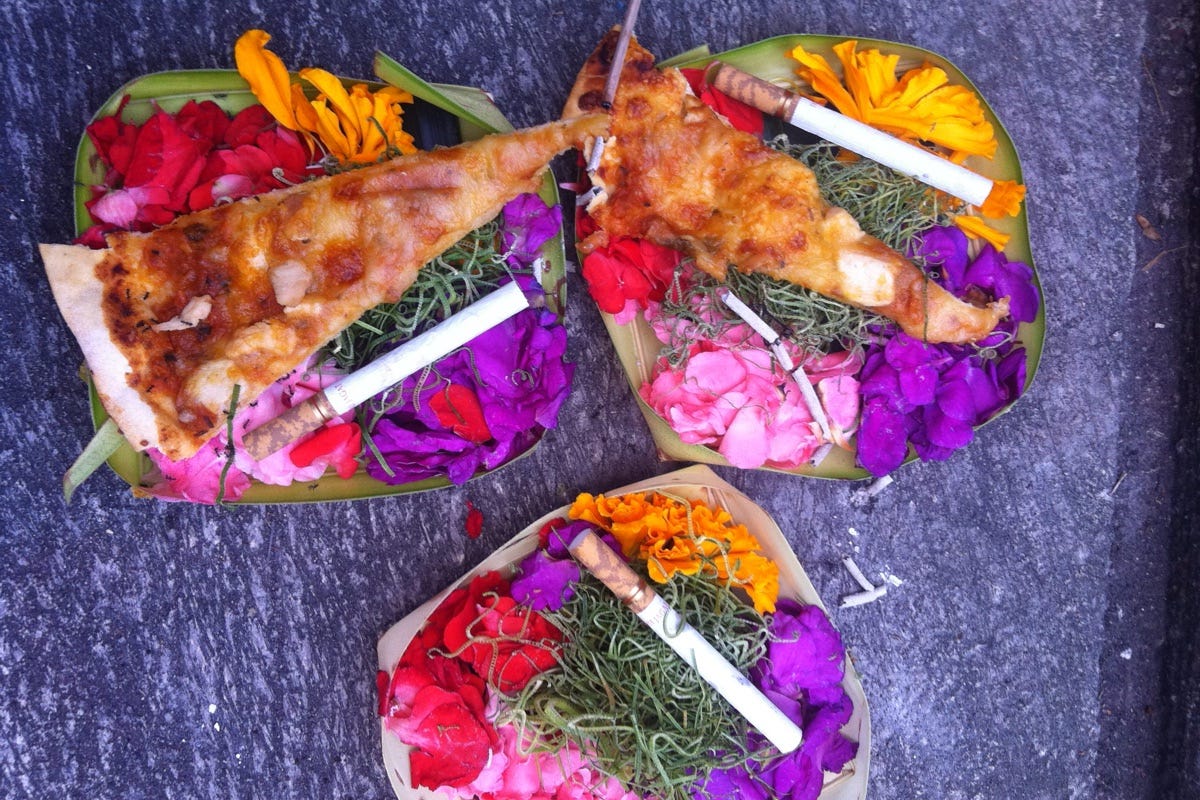
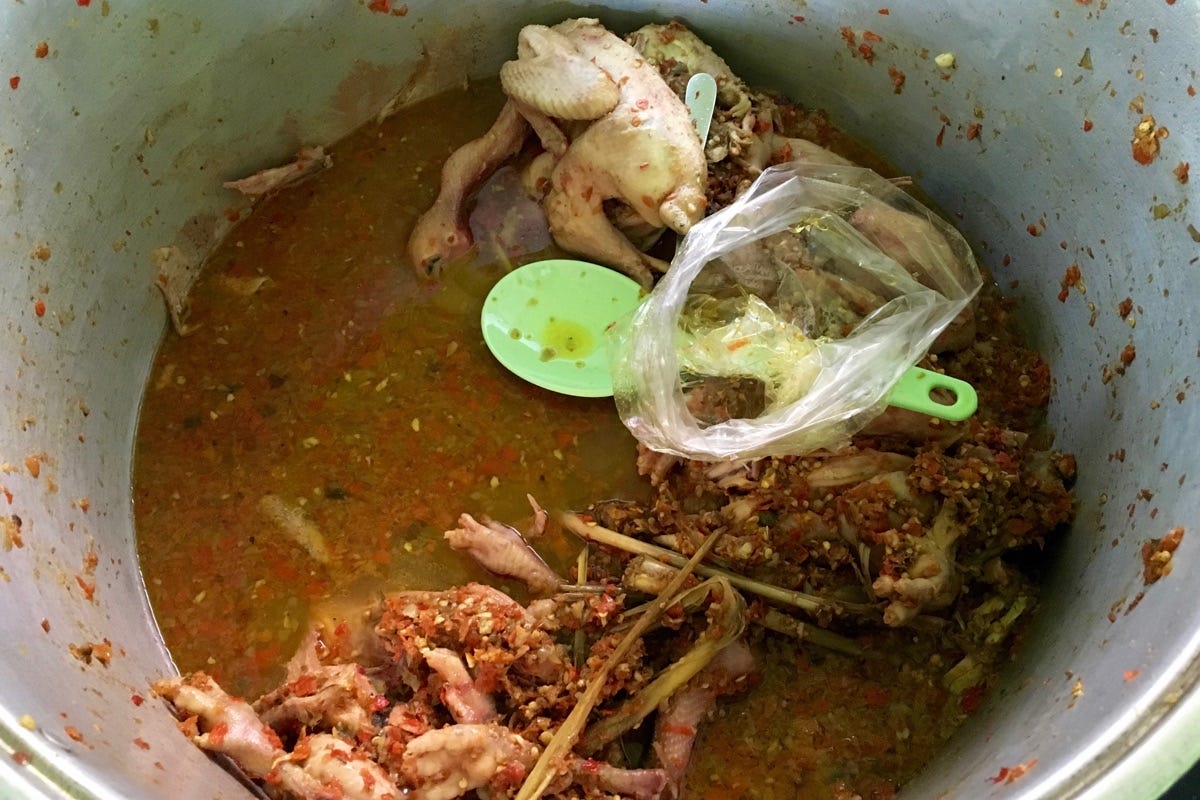
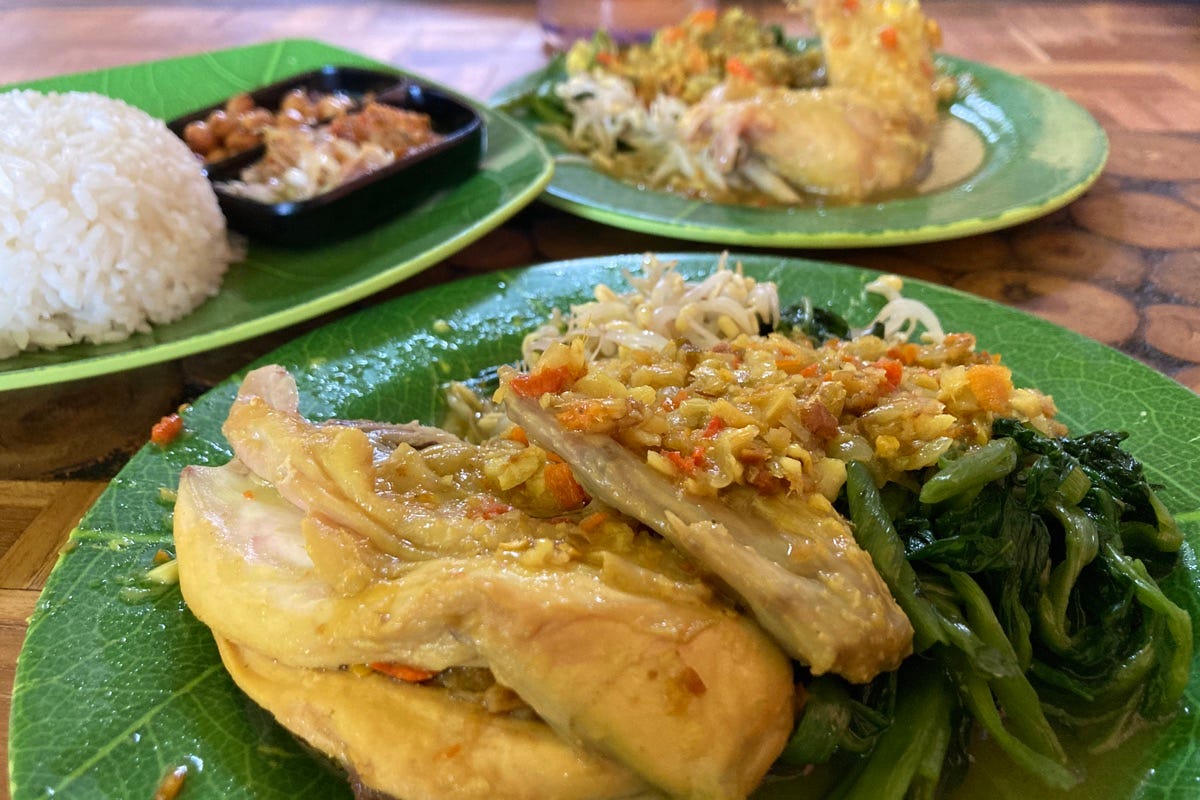
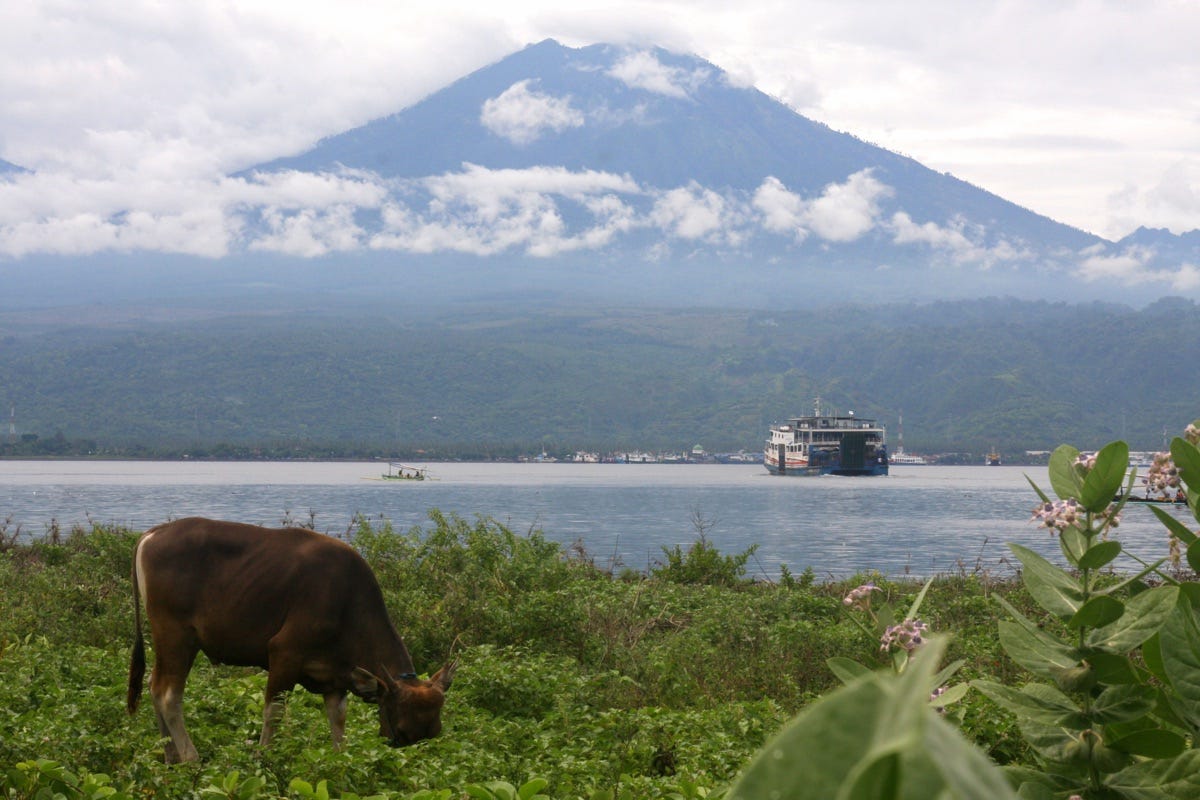









Share this post